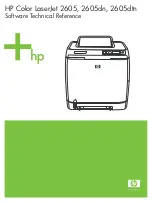
67
• MRand2
+
-
Identical to MRand1
+
- but using pink noise
•
As above but uni-polar
• VMRand1
+
-
A random number per voice, per parameter, that is generated at synth load time, generated
using white noise
This source is useful for having a set of random values that stays constant throughout the
current session.
•
As above but uni-polar
• VMRand2
+
-
Identical to VMRand1
+
- but using pink noise
•
As above but uni-polar
• Drift
+
-
Slowly changing random LFO
This can be used to simulate subtle parameter drift in hardware analogue synths – for
example. small amounts of modulation on osc pitch can simulate drifting VCOs.
Synth source sub-menu
LFOs
Each available LFO is presented as 3 sources in the TransMod system:
• LFO
+
-
Bi-polar LFO
• LFO+
Uni-polar LFO
•
Gate output of lfo (square wave)
Envelopes & Ramps
Each available Envelope and Ramp is presented as 2 sources in the TransMod system. This includes all Mod Envelopes
(Env), Amp envelopes (AmpEnv) and the Synth/Ensemble envelopes in Amber.
• Ramp+
Ramp (positive)
• Ramp-
Inverted ramp
This is very useful as a triggered envelope shape (it is not gated like an envelope).
• Env+
Envelope (positive)
• Env-
Inverted envelope – emulates the invert switch available on many synth envelopes
Additional Synth sources in Cypher
Cypher features some extra sources derived from its specialised oscillator functions.
Note
: While the oscillators feature certain hard-wired audio-rate modulation functions, all of the TransMod sources derived
from the oscillators are quantized to control-rate.
Oscillators as LFOs
The main purpose of these sources is to use an oscillator as an additional LFO, by engaging the
Low
button to set the
osc to LFO mode (the LFO rate is set using the
Beat
control). The LFO shape is derived from the oscillator’s waveform,
which can be modulated using the
Wave
control.
• Osc1
+
-
The frequency of Osc1 (shaped with Osc1 waveform)
• Osc2
+
-
The frequency of Osc2 (shaped with Osc2 waveform)
• Osc3
+
-
The frequency of Osc3 (shaped with Osc3 waveform)
Oscillator beating rates as LFOs
The following sources provide the beating rates of two oscillators against each other (effectively the difference in phase
between them), applied to the shape of one of the oscs. Whether you are using the
Beat
control for constant beating
rates, or simply using the
Scale
controls to detune normally with variable beating rates across the keyboard, osc beating
rates are always calculated and provided as TransMod sources.
• Beat12
+
-
Osc1 phase - Osc2 phase (shaped with Osc1 waveform)
• Beat21
+
-
Osc2 phase - Osc1 phase (shaped with Osc2 waveform)
• Beat23
+
-
Osc2 phase - Osc3 phase (shaped with Osc2 waveform)
• Beat32
+
-
Osc3 phase - Osc2 phase (shaped with Osc3 waveform)
• Beat31
+
-
Osc3 phase - Osc1 phase (shaped with Osc3 waveform)
• Beat13
+
-
Osc1 phase - Osc3 phase (shaped with Osc1 waveform)
Содержание DCAM SYNTH SQUAD
Страница 1: ......
Страница 2: ......
Страница 26: ...26 Shaper Filter Amp sections...
Страница 109: ......
Страница 110: ......
















































